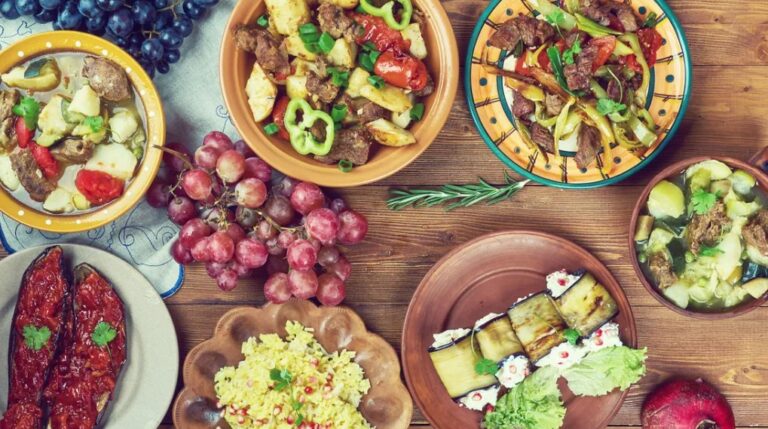Introduction to Armenian Cuisine
Armenian cuisine is rich in flavor and history, with influences from various cultures, including Turkish, Persian, and Mediterranean. Known for its use of fresh herbs and spices, Armenian cuisine is both hearty and delicious. The desserts in Armenian cuisine are no exception, with a variety of sweet treats that are sure to satisfy any sweet tooth.
Traditional Armenian Desserts
Armenian desserts have been enjoyed for generations, with many recipes passed down through families. These desserts often feature ingredients such as nuts, honey, and spices, which are staples in Armenian cuisine. Some traditional Armenian desserts include Gata, Nazook, and Pakhlava.
Gata – A Sweet Pastry Delight
Gata is a sweet pastry that is often enjoyed with tea or coffee. It is made with flour, sugar, eggs, and butter, and is filled with a sweet mixture of chopped nuts, honey, and cinnamon. Gata can be shaped in a variety of ways, including round or triangular, and is often decorated with unique designs on top.
Nazook – A Flaky Sweet Treat
Nazook is a flaky pastry that is similar to a croissant. It is made with flour, butter, sugar, and yeast, and is filled with a sweet mixture of butter, sugar, and cinnamon. Nazook is often served with tea or coffee, and can be enjoyed any time of day.
Pakhlava – A Layered Nutty Dessert
Pakhlava is a layered dessert that is made with phyllo dough, nuts, and honey. It is similar to Baklava, but with a unique Armenian twist. Pakhlava is often enjoyed during special occasions, such as weddings or religious holidays.
Tiramisu – An Armenian Classic with a Twist
Tiramisu is a classic Italian dessert that has been adapted to Armenian cuisine. This version features layers of ladyfingers soaked in coffee and brandy, with a creamy mixture of mascarpone cheese and whipped cream. Tiramisu is often topped with cocoa powder or shaved chocolate, and is a favorite among Armenians.
Baklava – A Sweet and Sticky Favorite
Baklava is a sweet and sticky dessert that is made with layers of phyllo dough, nuts, and honey. It is a favorite among Armenians, and is often enjoyed during special occasions or as a treat after a meal. Baklava can be made in a variety of shapes and sizes, and is often topped with chopped nuts or powdered sugar.
Final Thoughts on Armenian Desserts
Armenian desserts are rich in flavor and history, and are a testament to the country’s culinary traditions. From traditional treats like Gata and Pakhlava to classic desserts like Tiramisu, Armenian cuisine has something for everyone. Whether you’re in Armenia or trying Armenian desserts at home, be sure to indulge in the sweet and delicious flavors that make this cuisine so special.

